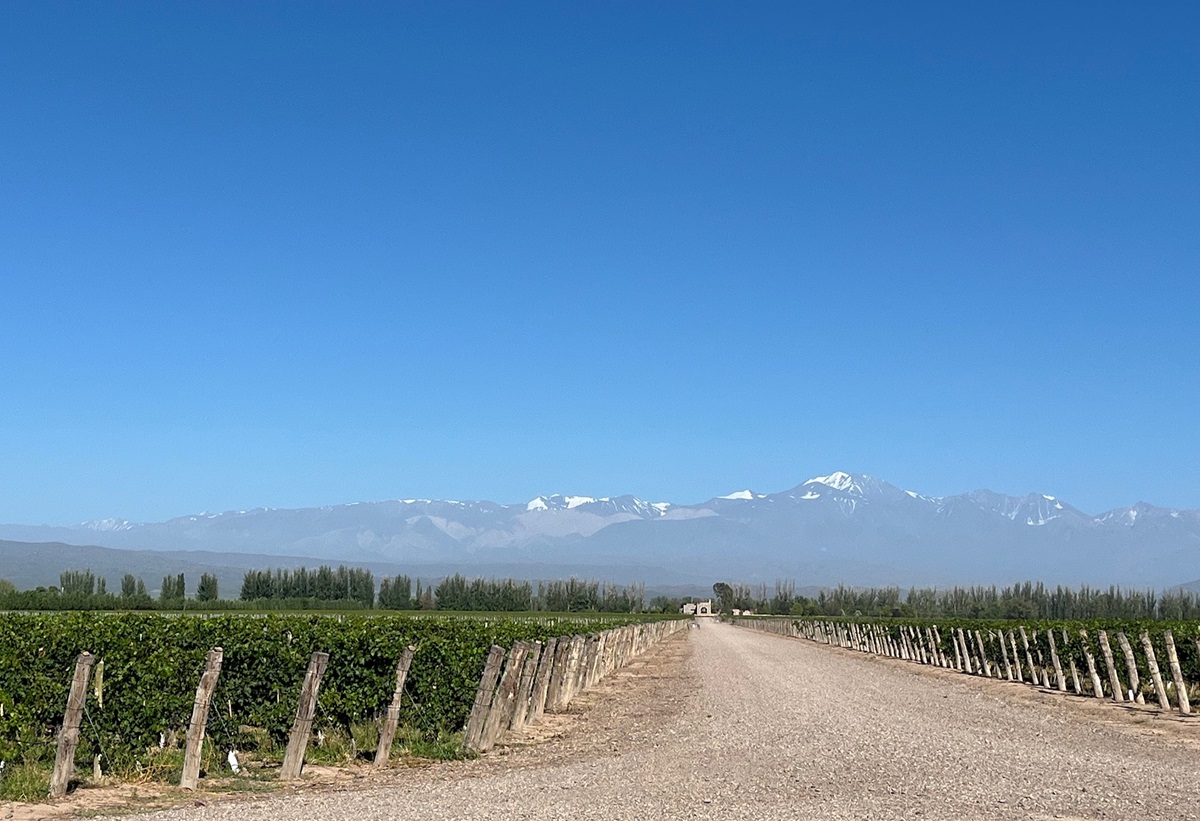BADEN’S SECRET IS OUT
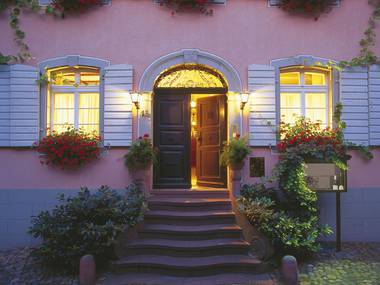
By Rose Murray Brown MW Published in The Scotsman 29 April 2017
Over half of vines planted in southern Germany’s Baden region are from the Pinot family. With Pinot Noir, Pinot Blanc and Pinot Gris dominating here, it is no wonder that Burgundy fans across the world are starting to show increasing interest in this little known German region.
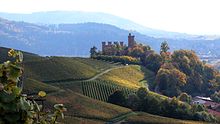 Nestled in a thin 400 kilometre strip of land between the River Rhine and the Black Forest, Baden boasts some of the warmest vineyards in Germany near the beautiful spa towns of Baden-Baden and Freiburg. With its balmy Mediterranean-like climate and limestone soils, Burgundy grapes grow well here – it has a similar latitude. Yet Baden is not well-known outside its own country.
Nestled in a thin 400 kilometre strip of land between the River Rhine and the Black Forest, Baden boasts some of the warmest vineyards in Germany near the beautiful spa towns of Baden-Baden and Freiburg. With its balmy Mediterranean-like climate and limestone soils, Burgundy grapes grow well here – it has a similar latitude. Yet Baden is not well-known outside its own country.
“Traditionally Baden wines were not exported as much as wines from Rhein and Mosel regions, with most Baden wines consumed in the local market”, says Iris Kellman of The Wine Barn, UK’s top specialist German wine merchant. Up until now, the Germans have been keeping the secret of Baden’s recent wine revival to themselves.
.jpg) Baden has a viticultural history back to Roman times when vines were brought north from Lake Constance in Switzerland in C2. However, it was Cistercian monks who brought Burgundian varieties to the famous southern Baden slopes in Kaiserstuhl [pictured right] and Breisgau, just across from the Rhine from the Alsace region, in the C14.
Baden has a viticultural history back to Roman times when vines were brought north from Lake Constance in Switzerland in C2. However, it was Cistercian monks who brought Burgundian varieties to the famous southern Baden slopes in Kaiserstuhl [pictured right] and Breisgau, just across from the Rhine from the Alsace region, in the C14.
After two World Wars, it took until the 1980’s before Baden growers started to focus on quality wines from the Pinots. Prior to this, family estates sold grapes to local co-operatives, who dominate here. It was not until growers like late Bernhard Huber, who imported further Pinot Noir clones direct from Jean Luc Pascal in Burgundy’s Cote de Beaune in 1987 to plant on his terraced limestone slopes alongside his father’s German Spatburgunder (Pinot Noir) clones, set about reducing yields and focusing on quality.
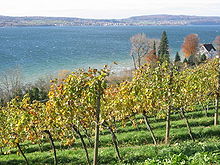 Now the word is out that Baden Spatburgunder (Pinot Noir), Weissburgunder (Pinot Blanc), Grauburgunder (Pinot Gris) and Chardonnay have dramatically improved, but sadly due to demand more sought-after Baden wines can be steep in price in the UK – and it is hard to find good Baden Pinot Noir under £12.
Now the word is out that Baden Spatburgunder (Pinot Noir), Weissburgunder (Pinot Blanc), Grauburgunder (Pinot Gris) and Chardonnay have dramatically improved, but sadly due to demand more sought-after Baden wines can be steep in price in the UK – and it is hard to find good Baden Pinot Noir under £12.
Pinot Noir is the widest planted with 36% of plantings (5,800 hectares) – with more planted in Baden than in Burgundy’s Cote d’Or (4,500 hectares). Baden Spatburgunder styles vary from minerally styles from Kaiserstuhl’s volcanic soils [pictured below] (Dr Heger, Karl Johner and Franz Keller), rich intensity from Malterdingen and Lahr’s loess soils (Huber and Wohrle) to lighter styles in Markgraflerland south of Freiburg (Wassmer) and Bodensee near Lake Constance [pictured above right] near the Swiss border.
The new generation of growers, like young Johannes Schneider of Claus Schneider, are training at top Burgundy domaines like Rossignol-Trapet before returning to their German estates.
Pinot Gris (10.5% of plantings) grows well here, performing better than Pinot Blanc. Chardonnay (1%) is often barrel fermented, but does not have the same intensity as the Pinots. Some growers experiment with Syrah and Cabernet Mitos (blend of Cabernet and Blaufrankisch).
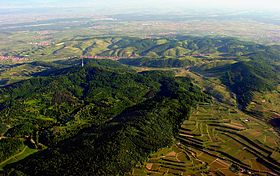 No surprise that German grapes like Riesling and Muller Thurgau are popular – with top Rieslings from Durbach in Ortenau south of Baden-Baden where it is called Klingelberger (Andreas Liable and Schloss Neuweier).
No surprise that German grapes like Riesling and Muller Thurgau are popular – with top Rieslings from Durbach in Ortenau south of Baden-Baden where it is called Klingelberger (Andreas Liable and Schloss Neuweier).
In the south on the Swiss-German border just north of Basel, you find grapes popular in Switzerland like Chasselas – known here as Gutedel (Martin Wassmer).
So what do Baden wines taste like? Typically whites are dry, full bodied, often oaked with riper fruits and higher alcohol than other German regions. With a slightly damper, cloudier climate and lower altitude than its neighbour Alsace across the Rhine, which is nestled in the foothills of the Vosges, the Baden fruit style is slightly heavier than in Alsace. This weightier style tends to work better matched with food, rather than as aperitifs.
WHITE WINE
BADEN PINOT BLANC LOT SERIES 18 2015 (£9.99 Aldi) 12.5%
Well done Aldi for branching out with this unusual Baden offering. Fresh floral aromas of Pinot Blanc spiced up with 9% Pinot Gris. Popular with tasters for its voluptuous ripeness, creamy rounded palate and light smoky hints.
GRAUBURGUNDER (PINOT GRIS) SONETT DRY 2014 Dr Heger (£14 www.thewinebarn.co.uk) 12.5%
Lovely vibrant light style Pinot Gris, not as spicy or dense as Alsatian examples, but juicy zippy and attractive.
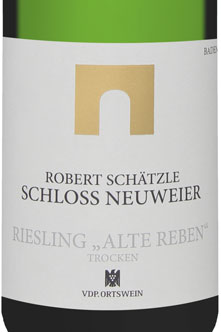 RIESLING NEUWEIERER ALTE REBEN 2015 Schloss Neuweier (£8.95 www.thewinesociety.com) 13% ***GOOD VALUE***
RIESLING NEUWEIERER ALTE REBEN 2015 Schloss Neuweier (£8.95 www.thewinesociety.com) 13% ***GOOD VALUE***
From old Riesling vines grown on granite near Baden-Baden by talented Robert Schatzle, who trained at Zind Humbrecht in Alsace. Very dry, zippy initially underlying depth and vibrancy. Good value.
RIESLING TIEFENBACHER SCHELLENBRUNNEN TROCKEN GG 2014 Heitlinger (£21.99 www.virginwines.co.uk) 12.5% ***STAR BUY***
Very serious old vine Riesling from Schellenbrunnen’s steep slopes, really expressive of its terroir with minerality, complexity and length.
CHARDONNAY SE DRY 2015 Bercher (£26 www.thewinebarn.co.uk)
Well-made barrel fermented Chardonnay (15% new) with lemon, lime, melon flavours and smooth rounded palate. Very attractive & very popular at our Baden Masterclass.
RED WINE
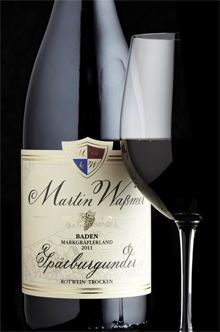 SPATBURGUNDER 2014 Wassmer (£12.95 www.thewinesociety.com) 13.5% ***GOOD VALUE***
SPATBURGUNDER 2014 Wassmer (£12.95 www.thewinesociety.com) 13.5% ***GOOD VALUE***
Lightest of our Pinots, but approachable. Silky soft rounded palate with an earthy undertone from ‘Germany’s Tuscany’. Tasters at our Baden Masterclass thought this the very best value Baden Pinot.
SPATBURGUNDER 2015 Claus Schneider (£16.95 www.swig.co.uk) 12.5% ***GOOD VALUE***
Loved the sappy juiciness, bright strawberry aromas and fresh zippy palate; tastes like a lesser Cote de Beaune appellation.
SPATBURGUNDER IHRINGER WINKLERBERG MIMUS 2013 Dr Heger (£32 www.thewinebarn.co.uk) 13.5% ***STAR BUY***
Step up in price and quality from Baden’s steepest and warmest vineyard. Ripe intense spice and cranberry aromas, distinct minerality, well balanced, deep fruit concentration.
SPATBURGUNDER BIENENBERG GG 2013 Huber (£35 www.justerinis.com) 13%
From Huber’s oldest vines on steep Bienenberg slopes. Reminds me of cross between Gevrey Chambertin and Chambolle Musigny with violet, cranberry and strawberry aromas, meaty richness, integrated tannins and long fine length. Tasters at our recent Baden Masterclass chose this as their favourite Spatburgunder.
Join Rose’s Ice Wine Masterclass: 17 May: Edinburgh £45 www.rosemurraybrown.com
wine tastings
The perfect gift for the wine enthusiast in the family. Rose does In-person tastings too.
cellar advice
Rose does cellar valuations for private clients, valuations for insurers & bespoke portfolio management.
Related stories
March 31, 2024
By Rose Murray Brown MW Published in The Scotsman 30 March 2024 On 2 February 1659, the first wine made from grapes grown in South Africa was crafted by the Governor of the Cape, Jan van Riebeeck. He had planted vines four years earlier in the Company’s Garden near Cape Town from cuttings imported from France. Van Riebeeck’s first
March 24, 2024
By Rose Murray Brown MW Published in The Scotsman 16 March 2024 Heatwaves and bushfires were very much on the agenda when I visited Chile last month as winemakers prepared for their 2024 harvest in blistering heat and drought, with a plume of smoke from the devastating fires lingering over coastal hills. Heat and drought are the greatest challenges
March 23, 2024
By Rose Murray Brown MW Published in The Scotsman 9 March 2024 I have two glasses of Malbec in my hands from the same high-altitude vineyard in Uco valley in Argentina. I am in the Catena Institute of Wine in Mendoza with winemaker Agustin Silva. He has asked me to taste the two wines, both from the 1500m high



